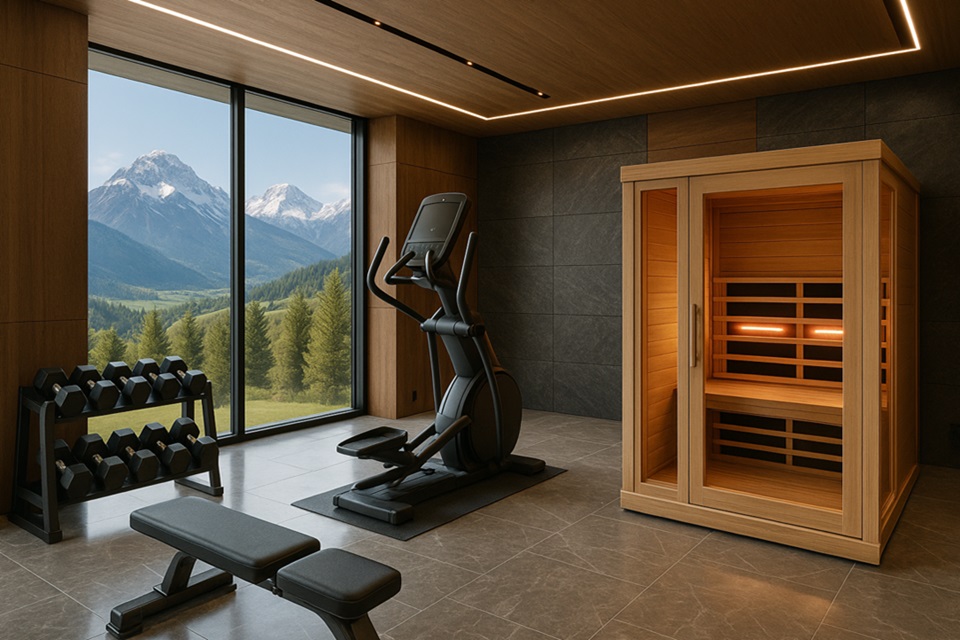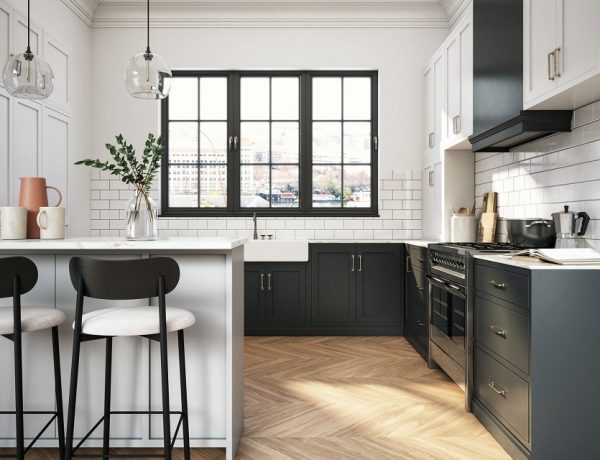Table of Contents
A home gym should feel like part of your home, not an afterthought. The right choices in materials, color, lighting, and equipment can turn a workout zone into a seamless extension of your personal style. At Peak Primal Wellness, we help homeowners design training spaces that perform at a high level and look like they belong in the pages of an interior magazine.
Start With Your Home’s Style Profile
Before you buy equipment, define the look and mood you want to preserve.
- Modern minimal: clean lines, matte finishes, neutral palette, hidden storage
- Warm organic: natural woods, woven textures, greenery, diffused light
- Industrial loft: exposed brick, black metal, concrete or rubber floors
- Classic luxury: wood accents, framed mirrors, upholstered benches, layered lighting
Create a simple mood board with paint swatches, flooring samples, and images of rooms in your home. Use this as your filter for every design choice.
Choose A Color Palette & Finishes
Color unifies the gym with the rest of the house.
- Neutrals first: anchor with whites, creams, charcoals, or warm grays
- One accent: pick a single tone seen elsewhere in your home, like olive, navy, or terracotta
- Equipment finishes: select matte black, brushed steel, or wood accents to match door hardware, fixtures, or furniture
If your home features warm woods, look for equipment with wood frames or add wood storage and wall slats to echo the same tone.
Plan The Layout By Zones
Great gym design blends function and flow. Divide the room into distinct but cohesive zones.
- Strength zone: rack, adjustable bench, dumbbells or kettlebells
- Movement zone: mat work, Pilates reformer, mobility tools
- Cardio zone: elliptical, rower, or treadmill with sightline to a window
- Recovery zone: foam roller station, massage tools, infrared or breathwork corner
Use rugs, floor inlays, or ceiling lighting changes to define zones without adding visual clutter.
Select Equipment That Looks As Good As It Works
Form and function can coexist when you shop with design in mind.
- Pilates reformers with wood frames complement organic or coastal interiors
- Matte black cable trainers suit modern, minimal, or industrial spaces
- Compact ellipticals and rowers with slim profiles keep lines clean
- Designer storage benches hold bands, straps, and small tools while doubling as seating
If you love a minimalist look, choose multi use tools and hide accessories in cabinetry to keep the room calm.
Invest In Flooring That Fits Your Aesthetic
Flooring is the visual foundation of the gym.
- Rubber tiles or rolls for strength training and sound control
- Engineered wood or cork for Pilates and mobility with warm, refined visuals
- High density foam for kids or light movement areas
- Turf runners for sled work or agility in a sport focused space
Blend materials by zone, then connect them with a shared color family so transitions feel intentional.
Layer Your Lighting Like A Designer
Lighting sets energy and ambiance.
- Overhead general light for clarity and safety
- Task lighting over mirrors or racks for focused work
- Accent lighting with LED strips behind mirrors, under shelves, or within wall slats
- Dimmers so you can switch from training bright to recovery calm
Aim for warm to neutral white bulbs. Cooler light can feel clinical and may clash with residential spaces.
Use Mirrors With Intention
Mirrors improve alignment and make spaces feel larger, but they should match your interior style.
- Framed mirrors in wood or metal for classic or transitional homes
- Edge to edge panels for modern or minimal spaces
- Arched or rounded silhouettes to soften industrial rooms
Place mirrors to reflect movement, not clutter. Avoid angles that catch storage areas.
Design Storage Like Built In Furniture
Clutter is the fastest way to break a design story. Plan storage early.
- Custom cabinetry for dumbbells, bands, towels, and tech
- Wall mounted racks for bars, plates, and mats that display like art
- Hidden hampers and charging drawers for a clean daily routine
- Pegboards or rail systems that echo your kitchen or mudroom hardware
Keep open shelving styled with plants, books, or a sand timer so the room feels lived in, not commercial.
Manage Sound & Sightlines
Acoustics and views influence how your gym feels within the home.
- Acoustic panels disguised as art or wood slats reduce echo
- Heavy drapery softens sound and ties into adjacent rooms
- Frosted glass or woven shades maintain privacy while letting in light
- Equipment placement that preserves a sightline to a window or focal wall
A quiet, visually calm room invites more frequent use.
Add Recovery Elements That Match Your Decor
Recovery should blend with your interior, not compete with it.
- Infrared sauna with glass door and cedar finish to warm a neutral palette
- Vibration plate tucked under a console
- PEMF mat and foam roller stored in a basket by the lounge chair
- Breathwork corner with floor cushion, small table, and diffuser
Tie everything together with a throw blanket and a plant to soften the look.
Phase Your Project Like A Pro
You do not need to finish everything at once.
- Phase one: paint, flooring, mirrors, basic storage, essential equipment
- Phase two: lighting layers, additional equipment, acoustic treatments
- Phase three: designer finishes, sauna or recovery corner, built ins, art
This approach keeps the space usable while you refine the aesthetic.
Quick Checklist
- Style profile and mood board complete
- Cohesive palette with one accent color
- Zoned layout for strength, movement, cardio, and recovery
- Equipment finishes aligned with existing hardware and wood tones
- Flooring by function with intentional transitions
- Layered lighting on dimmers
- Mirror plan that matches your home style
- Hidden storage to keep surfaces clean
- Acoustic and privacy solutions
- Recovery elements that look like part of the room
A gym that matches your interior design feels natural, motivating, and timeless. With thoughtful choices, you can create a space that elevates your training while honoring the look and feel of your home. If you want help curating equipment that suits your style and goals, Peak Primal Wellness can guide the process from vision to install.





No Comments